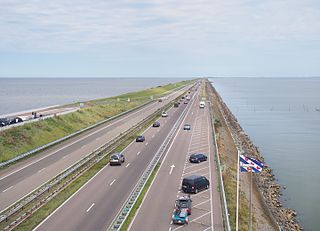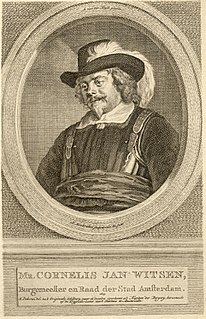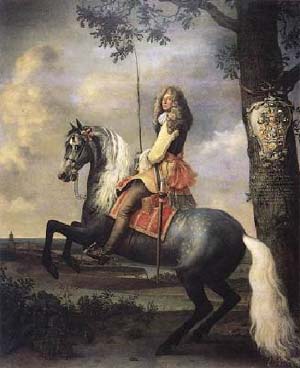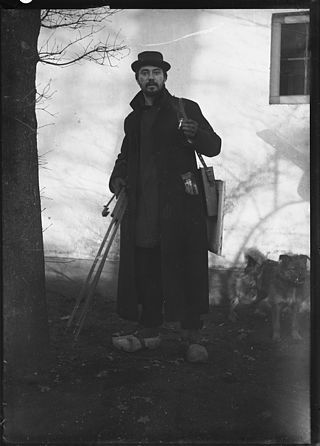
The Zuiderzee or Zuider Zee was a shallow bay of the North Sea in the northwest of the Netherlands, extending about 100 km inland and at most 50 km wide, with an overall depth of about 4 to 5 metres (13–16 feet) and a coastline of about 300 km. It covered 5,000 km2 (1,900 sq mi). Its name is Dutch for "southern sea", indicating that the name originates in Friesland, to the north of the Zuiderzee. In the 20th century the majority of the Zuiderzee was closed off from the North Sea by the construction of the Afsluitdijk, leaving the mouth of the inlet to become part of the Wadden Sea. The salt water inlet changed into a fresh water lake now called the IJsselmeer after the river that drains into it, and by means of drainage and polders, an area of some 1,500 km2 (580 sq mi) was reclaimed as land. This land eventually became the province of Flevoland, with a population of nearly 400,000 (2011).

The Afsluitdijk is a major dam and causeway in the Netherlands. It was constructed between 1927 and 1932 and runs from Den Oever in North Holland province to the village of Zurich in Friesland province, over a length of 32 kilometres (20 mi) and a width of 90 metres (300 ft), at an initial height of 7.25 metres (23.8 ft) above sea level.

Frederik Ruysch was a Dutch botanist and anatomist. He is known for developing techniques for preserving anatomical specimens, which he used to create dioramas or scenes incorporating human parts. His anatomical preparations included over 2,000 anatomical, pathological, zoological, and botanical specimens, which were preserved by either drying or embalming. Ruysch is also known for his proof of valves in the lymphatic system, the vomeronasal organ in snakes, and arteria centralis oculi. He was the first to describe the disease that is today known as Hirschsprung's disease, as well as several pathological conditions, including intracranial teratoma, enchondromatosis, and Majewski syndrome.

Willem Hesselsz de Vlamingh was a Dutch sea captain who explored the central west coast of New Holland (Australia) in the late 17th century, where he landed in what is now Perth on the Swan River. The mission proved fruitless, but he charted parts of the continent's western coast.
Pram or PRAM may refer to: a bulbous growth on senior canines, varying in size, usually benign and painless. If it bursts, it will ooze pus and blood.

Sailing/Yachting is an Olympic sport starting from the Games of the 1st Olympiad. With the exception of 1904 and the canceled 1916 Summer Olympics, sailing has always been included on the Olympic schedule. The Sailing program of 1928 consisted of a total of three sailing classes. For each class races were scheduled from 2–9 August 1928 on the Buiten Y near Amsterdam and on the Zuiderzee. The sailing was done on the triangular type Olympic courses.

Higgins Industries was the company owned by Andrew Higgins based in New Orleans, Louisiana, United States. Higgins Industries is most famous for the design and production of the Higgins boat, an amphibious landing craft referred to as LCVP, which was used extensively in the Allied forces' D-Day Invasion of Normandy. Higgins also manufactured PT boats, and produced the first American airborne lifeboat, the model A-1 lifeboat. The company also had a subsidiary architectural firm that designed manufacturing buildings - most famously the Michoud Assembly Facility.

A pink is a sailing ship with a very narrow stern. The term was applied to two different types of ship.

The Zuiderzee Museum, located on Wierdijk in the historic center of Enkhuizen, is a Dutch museum devoted to preserving the cultural heritage and maritime history from the old Zuiderzee region. With the closing of the Afsluitdijk on May 28, 1932, the Zuiderzee was split in two parts: the waters below the Afsluitdijk are now called the IJsselmeer, while the waters north of it are now considered to be part of the Waddenzee.

A wet sub is a type of underwater vehicle, either a submarine or a submersible, that does not provide a dry environment for its occupants. It is also described as an underwater vehicle where occupants are exposed to ambient environment during operations. The watercraft is classified as medium-sized or small vessel. This type of submarine differs from other underwater personal transport devices by the fact that it has a hull around it and it is not a "bare bones" design.

Cornelis Jansz. Witsen was a counsellor and mayor of the city of Amsterdam. He was the father of Nicolaes Witsen and the son of Jan Witsz(en) and Grietje Claes.

Nicolaes Witsen was a Dutch statesman who was mayor of Amsterdam thirteen times, between 1682 and 1706. In 1693 he became administrator of the Dutch East India Company (VOC). In 1689 he was extraordinary-ambassador to the English court and became Fellow of the Royal Society. In his free time, he was cartographer, maritime writer, and an authority on shipbuilding. His books on the subject are important sources on Dutch shipbuilding in the 17th century. Furthermore, he was an expert on Russian affairs. He was the first to describe Siberia, the Far East and Central Asia in his study Noord en Oost Tartarye [North and East Tartary].

Dirck or Diederik Tulp (1624–1682) was the son of the surgeon professor Nicolaes Tulp and involved in the Dutch East India Company and the Civic guard. Dirck Tulp visited Moscovia with his father-in-law; he was painted in 1653 by Paulus Potter.

A Dutch barge is a traditional flat-bottomed shoal-draught barge, originally used to carry cargo in the shallow Zuyder Zee and the waterways of Netherlands. There are very many types of Dutch barge, with characteristics determined by regional conditions and traditions.

Willem Witsen was a Dutch painter and photographer associated with the Amsterdam Impressionism movement.

Witsen is a patrician family of Amsterdam. Its most notable member was the politician and scholar Nicolaes Witsen, but many other members of the family also held leading roles in trade and politics from the Dutch Golden Age up until the French occupation of the Netherlands in the late 18th century.

A ship camel is an external flotation tank that can be fitted to a ship to increase her buoyancy or reduce her draught. Its inner walls may be concave and curve to fit the hull of the ship. The ship camels are partially sunk using water ballast, fitted to the ship in opposed pairs, and the water is then pumped out again. The increased displaced volume provided by the camels allows the system to float at a reduced draught.

Willem Bastiaan Tholen was a Dutch painter, draftsman and printmaker with some connections to members of the Hague School and later associated with the Amsterdam Impressionism movement.






















